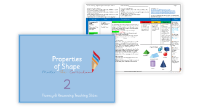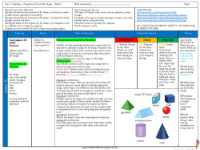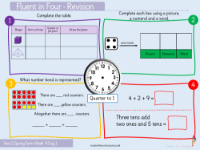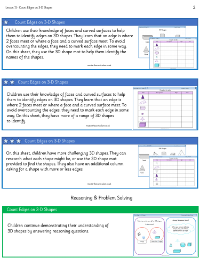Properties of shape - Count edges on 3D shapes - Presentation
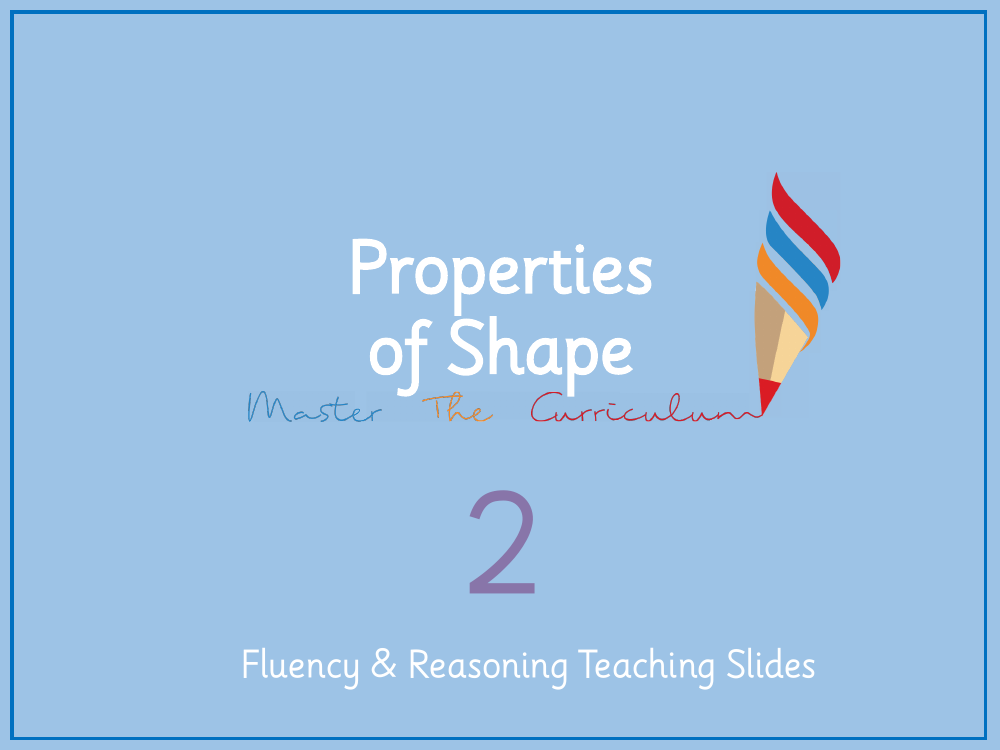
Maths Resource Description
In this engaging lesson focused on the properties of 3D shapes, students will learn to describe these shapes by counting their edges. The term 'edge' refers to the line where two faces of a shape meet, and students are encouraged to identify these on various shapes provided. Through a series of activities, they will count the edges of different 3D shapes, such as cubes, pyramids, and cuboids. The lesson aims to help students visualise and understand the structure of 3D shapes by examining their edges and faces, enhancing their spatial awareness and geometric knowledge.
The lesson includes practical tasks where students count the edges of a variety of 3D shapes and record their findings in a table, ensuring they do not double-count any edges. For example, they will discover that a cube has 12 edges and 6 faces, while a cone has 1 edge and a curved surface. Additional activities challenge students to sort shapes based on the number of edges or faces, from the smallest to the largest number of edges. Reasoning exercises are also incorporated, such as correcting mistakes in shape sorting or explaining why a statement about the number of edges on a shape might be incorrect. Through these exercises, students compare and contrast different shapes, reinforcing their understanding of 3D geometric properties.
